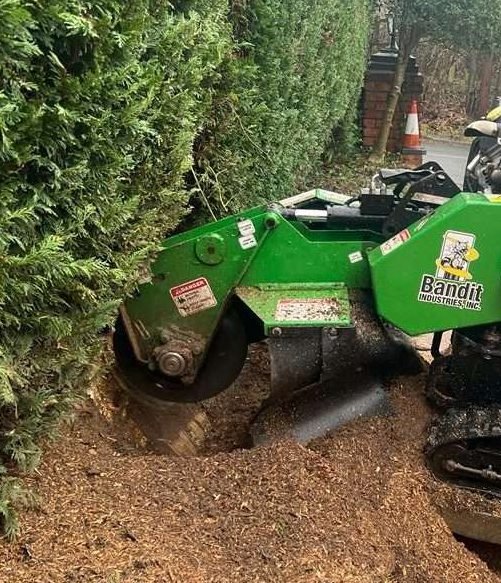Part 1: The History of Tree Surgeons: Victorian Times to World War II
Introduction
The profession of tree surgery, also known as arboriculture, has a rich history that spans several centuries. From the Victorian era to World War II, tree surgeons played an important role in managing and caring for trees, adapting their practices to the changing times. In this two-part article, we will explore the historical development of the tree surgery industry, focusing on the period from Victorian times to World War II.
- Victorian Era (1837-1901)
The Victorian era marked a significant turning point in the field of arboriculture. As urbanization rapidly spread across Britain, the need for professional tree care became apparent. Trees in cities and towns required maintenance, particularly in relation to safety, aesthetics, and infrastructure. Tree surgeons emerged as skilled individuals trained in the art of tree care, equipped with tools and techniques to address these challenges.
During this time, tree surgeons often worked closely with landscape architects and garden designers to create and maintain elaborate parks and gardens. They were responsible for the pruning, shaping, and preservation of trees, ensuring they complemented the overall design while providing shade and beauty.
- Industrial Revolution and Urban Expansion
The Industrial Revolution, which began in the late 18th century and continued through the 19th century, brought about significant changes in society and urban development. As cities expanded rapidly, tree surgeons faced new challenges in managing the growing number of trees within urban environments.
Tree surgeons were called upon to address issues such as overcrowding of trees, diseases, and the management of aging specimens. They became skilled in the art of tree removal and reshaping, often using traditional hand tools such as pruning saws and axes.
- Arboriculture Organizations and Training
In the late 19th century, organizations and societies dedicated to arboriculture began to emerge. These institutions aimed to promote the profession and develop standards and guidelines for tree care. Notable examples include the Royal Forestry Society, founded in 1882, and the Arboricultural Association, established in 1964.
Formal training and education for tree surgeons also began to gain traction during the Victorian era. Courses and apprenticeships were offered to individuals seeking to enter the profession, providing them with the necessary skills and knowledge in tree care and management.
- World War I and World War II
The outbreak of World War I and later World War II had a significant impact on the tree surgery industry. During these periods, tree surgeons played a crucial role in managing trees within military camps, airfields, and urban areas affected by bombing.
Tree surgeons were tasked with assessing tree health, removing hazardous trees, and pruning to ensure the safety of military personnel and civilians. They worked under challenging conditions, often in war-torn landscapes, demonstrating their resilience and adaptability.
Conclusion
From the Victorian era to World War II, the tree surgery industry underwent significant transformations. Tree surgeons evolved from skilled individuals caring for trees in parks and gardens to professionals addressing the unique challenges presented by urbanization, industrialization, and wartime circumstances.
During this period, the establishment of arboriculture organizations and the development of formal training programs helped shape the profession, promoting standards and best practices. Tree surgeons continued to adapt their techniques and equipment to meet the changing needs of society.
In the second part of this article, we will explore the post-World War II era and the modern developments that have shaped the tree surgery industry into what it is today.
Part 2: The History of Tree Surgeons: World War II to the Present Day
Introduction
In the second part of this article, we will continue our exploration of the history of tree surgeons, focusing on the period from World War II to the present day. This period witnessed further advancements in the tree surgery industry, including the development of new techniques, equipment, and the growing emphasis on environmental conservation and sustainability.
- Post-World War II Era
After World War II, the tree surgery industry experienced a period of rebuilding and recovery. As cities and communities were reconstructed, tree surgeons played a vital role in restoring urban green spaces and managing tree populations. Their work included tree planting initiatives and the rejuvenation of parks and gardens that had been impacted by the war.
During this time, tree surgeons also began to adopt more advanced equipment and machinery to improve efficiency and safety. Motorized chainsaws became prevalent, replacing traditional hand tools and significantly increasing the speed and precision of tree felling and pruning operations.
- Environmental Conservation and Sustainability
In the latter half of the 20th century, there was a growing recognition of the importance of trees and the need for environmental conservation. Tree surgeons became instrumental in preserving and protecting trees, as well as promoting sustainable practices in the field of arboriculture.
Arborists began to advocate for tree preservation, focusing on techniques such as crown reduction and selective pruning to maintain tree health while accommodating urban infrastructure. They also played a role in raising awareness about the benefits of trees, such as their contribution to air quality, biodiversity, and overall well-being.
- Technological Advancements
The advancement of technology has had a profound impact on the tree surgery industry. Innovations in tree climbing equipment, such as harnesses, ascenders, and mechanical devices, have improved safety and efficiency for arborists working at heights. These advancements have allowed tree surgeons to access and work on trees with greater ease and reduced physical strain.
Furthermore, the use of specialised machinery and equipment, such as stump grinders, wood chippers, and aerial lift platforms, has revolutionized tree removal and pruning processes. These tools enable arborists to carry out their work more effectively, minimizing disruptions to the surrounding environment.
- Professional Standards and Qualifications
Over the years, the tree surgery industry has seen the establishment of professional standards and qualifications to ensure the competency and professionalism of practitioners. Organizations such as the International Society of Arboriculture (ISA) and the Arboricultural Association (AA) have developed certification programs and guidelines for arborists worldwide.
These professional standards emphasize the importance of ongoing education, training, and adherence to best practices in arboriculture. Qualified tree surgeons are equipped with the necessary skills and knowledge to provide expert tree care services while prioritizing safety, tree health, and environmental stewardship.
Conclusion
From the post-World War II era to the present day, the tree surgery industry has evolved significantly. Tree surgeons have embraced technological advancements, adopted sustainable practices, and contributed to the preservation and management of urban forests.
With a focus on safety, environmental conservation, and professional standards, the tree surgery profession continues to play a vital role in maintaining the health and beauty of trees in urban and rural settings. As we look to the future, tree surgeons such as Hassell Ltd will undoubtedly continue to adapt to new challenges and advancements, ensuring the well-being and sustainability of our valuable tree resources.












